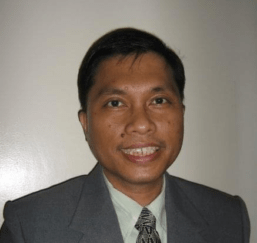OBLIQUE OBSERVATIONS
By Atty. Gilberto Lauengco, J.D.

Recently, a magnitude 6.9 earthquake hit the province of Cebu. Other than toppling buildings and killing some civilians, the said tremor has triggered new interest or concern on the topic of “The Big One.” The so-called “Big One” is the projected and overdue magnitude 7.2 or stronger earthquake expected to hit Metro Manila in the near future.
The “Big One” is expected to have its center along the West Valley Fault, which historically has its major movements occurring every 400 to 600 years. Since its last activity happened around 1658 then scientists are saying that the probability of experiencing a major jolt along the said line is increasing every year. Are we ready for the big one?
There was a 2004 study conducted by the Japan International Cooperation Agency (JICA), the Philippine Institute of Volcanology and Seismology (Phivolcs), and the Metropolitan Manila Development Authority (MMDA), which came up the likely scenarios of the said magnitude earthquake striking the National Capital Region. The Philippine and Japanese governments are set to revisit the said study to adjust the same to reflect the increased population and number of buildings. The previous study predicted casualties in the thousands along with buildings toppling during the quake.
With the current controversies surrounding flood control projects, some are raising questions about the stability of our bridges, roads and buildings and their ability to withstand the effects of earthquakes. Last April, building experts in the country expressed their concerns about the readiness of buildings and structures in case a major quake hits the metro. Some have called for an extensive architectural and structural audit.
Unfortunately, some critics have pointed out possible character flaws that Filipinos have that may spell trouble for us all. First, we have a collective amnesia and lack of obsessive continuous momentum in any effort we do. After some noise about disaster preparedness, “ningas kugon” stepped in and we lost steam. We really need to learn to apply ourselves to tasks with a maniacal non-stop fervor. Second, we need to demand excellence both from ourselves and everyone in society. The concept of “pwede na yan” must be stamped out from every child in our school system. The concept of no kid left behind needs to be reevaluated and a shift to a more draconian system needs to be implemented. As long as we allow mediocrity to continue, then we will have problems with our disaster preparedness. A strict enforcement of our building and all laws for that matter must be implemented. These two main flaws will always prevent any meaningful disaster preparedness program in our country.
We already have a collective anger over corruption. Hopefully, we can have a collective passion applied to disaster preparedness. Otherwise, we are doomed.


